Kitten-sized extinct 'lion' named after David Attenborough
- Published
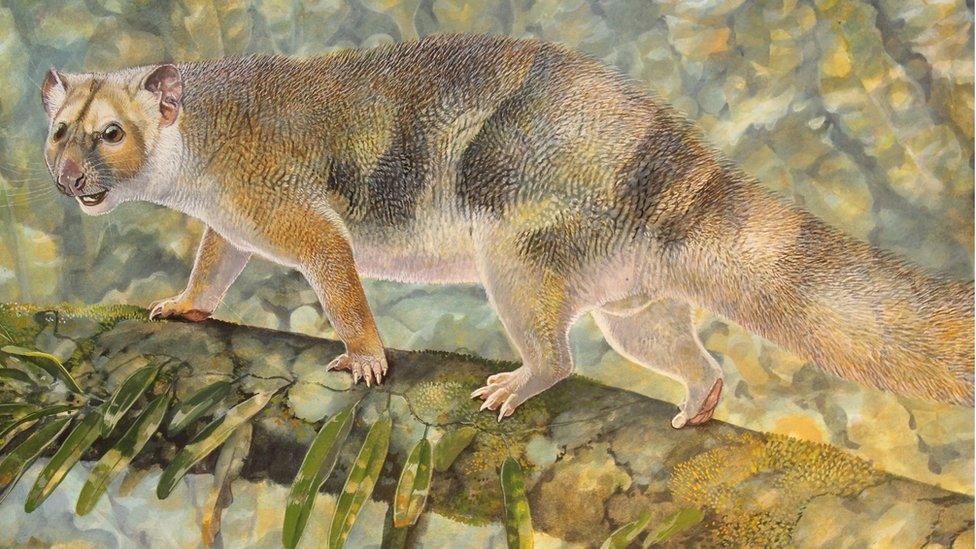
Microleo attenboroughi was small enough to fit inside a handbag, according to Australian scientists
A miniature marsupial lion, extinct for at least 18 million years, has been named after Sir David Attenborough after its fossilised remains were found in a remote part of Australia.
Teeth and bone fragments from the kitten-sized predator, named Microleo attenboroughi, were found in limestone deposits at the Riversleigh World Heritage Fossil site in north-western Queensland.
The researchers named the new species after the British broadcasting legend because of his work promoting the famous fossil site, which provides a record of nearly 25 million years of Australia's natural history.
When Microleo was still prowling around, in the early Miocene era (roughly 19 million years ago), the arid, outback ecosystem was a lush rainforest.
"It likely ran through the treetops, gobbling up birds, frogs, lizards and insects," says Dr Anna Gillespie, a palaeontologist at the University of New South Wales (UNSW).
Dr Gillespie, who has been working at Riversleigh and preparing fossils for 20 years, helped recover fragments of the animal's skull and several teeth.
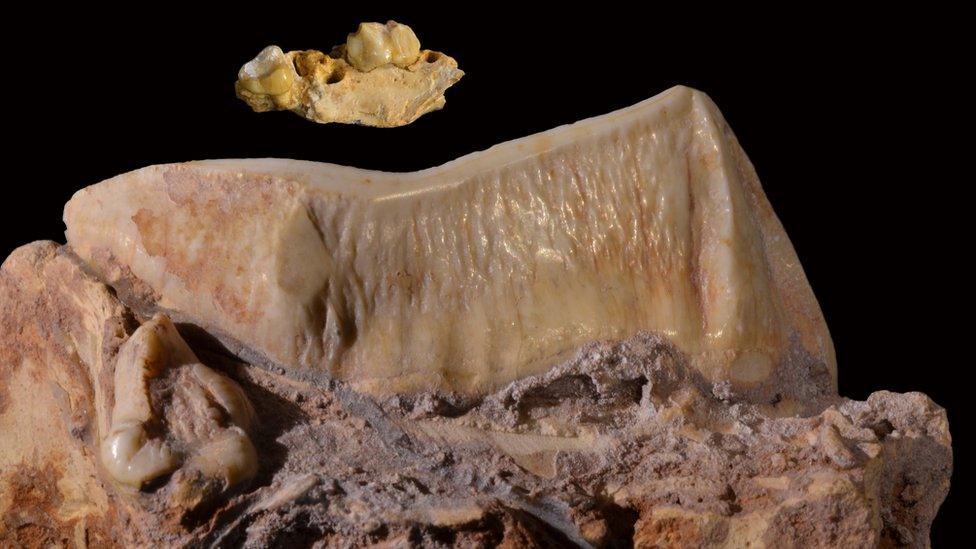
The relatively tiny tooth row of Microleo attenboroughi (top), compared with the tooth row of its Pleistocene relative, the lion-sized Thylacoleo carnifex
It's far from a complete skeleton, but it's an important part of the puzzle."Crucially, we have got the third premolar, which is an elongated tooth that looks like a blade," she told the BBC.
The razor-sharp tooth, used to tear up prey, is a common feature found in all known members of the family.
"It immediately tells us it's a marsupial lion," she says.
Pocket-sized predator
But the tooth is by far the smallest of its kind ever recovered.
It's about one-tenth the size of the 3cm-long "bolt-crunching" teeth belonging to the largest and last surviving marsupial lion, Thylacoleo carnifex, which went extinct about 100,000 years ago.
Thylacoleo weighed about 130kg (286lbs) and was Australia's largest carnivorous mammal. It was a fearsome predator about the size of an African lion, with the bite strength to match, and hunted megafauna such as giant kangaroo and diprotodon.
In sharp contrast, Dr Gillespie and her team estimate that their "little guy" weighed only 600g, and was about the size of a kitten.
"We weren't expecting to find a marsupial lion of this small size," she says. "It might have been a bit too big to fit in your pocket, but it would have fit quite comfortably in a handbag. It would have been very cute."
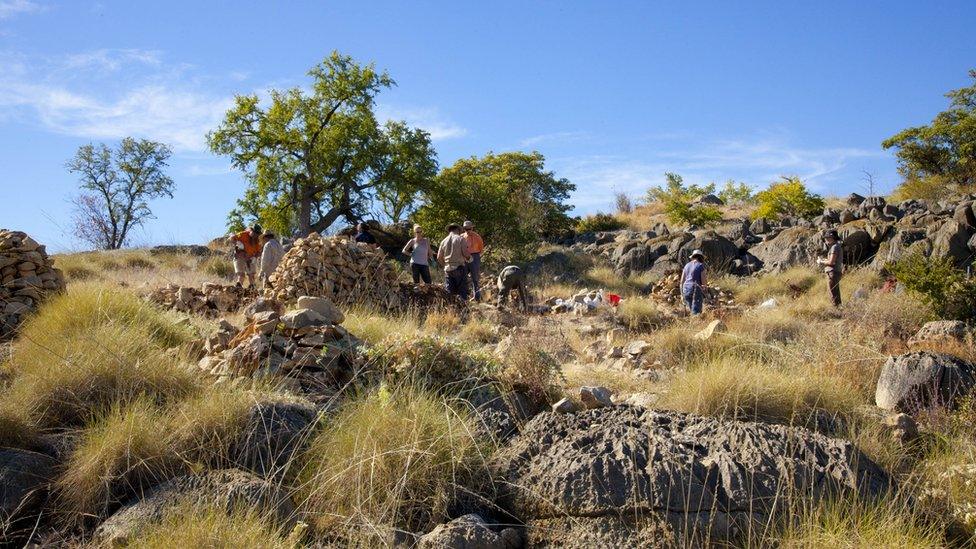
The Neville's Garden site is renowned for the rich diversity of fossils that have been discovered there over many years
The team has ruled out the possibility that the fossils belonged to a juvenile, or a malformed member of a related species. This is due to their distinctive shape, the fact that all the molars have erupted and the presence of "very clear wear patterns".
"This animal has been running around hunting things for quite a while. So it's definitely an adult," says Dr Gillespie.
The team from UNSW has described the new species in the journal Palaeontologia Electronica.
Unmatched diversity
With this find, the researchers have determined that at least three different marsupial lions were co-existing in the ancient Riversleigh rainforest.
"This level of diversity is unmatched for the family at any other time in their evolutionary history," the researchers note.
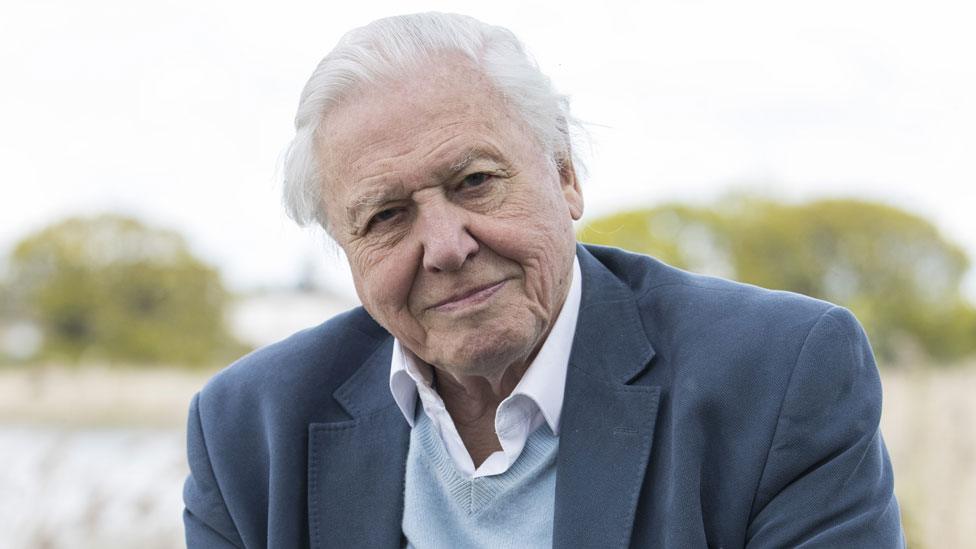
Sir David Attenborough has long promoted Australia's Riversleigh World Heritage Fossil site
One marsupial lion (Priscileo) weighed about 1.8kg, and was about the size of a cat. Another yet-to-be described species (Wakaleo) weighed around 30kg, about the size of a small Labrador dog, says Dr Gillespie.
She says it indicates that they may have been co-operating, dividing up the food resources to reduce competition between themselves.
The fossil was found in a location at Riversleigh known as Neville's Garden, which has become renowned for its rich diversity of animals.

Microleo was tiny compared to other members of the marsupial lion family, which included the enormous and fierce Thylacoleo
It's yielded bandicoots, possums, kangaroos, toothed platypuses, small koalas, thousands of bats, fish, turtles, lizards, pythons and a range of rainforest birds.
"My colleagues have been working at Riversleigh for 40 years," says Dr Gillespie.
"In that time we have processed tonnes of limestone, and got thousands and thousands of fossils back, but this is the only specimen from this animal.
"So it's rather enigmatic in this way," she says. "It might have been a rare species in that ecosystem, but we still have to hunt for more."
'Freakishly productive'
Stephen Wroe, an associate professor of zoology and palaeontology at the University of New England in NSW, who was not involved in the study, says the discovery raises new questions about the origin of the marsupial lion family.
"Until quite recently there were only a few marsupial lion species known. Over the last decade or two evidence from Riversleigh has seen this jump to 11 subspecies," he says.
"This most recent find doesn't just increase the known diversity in terms of species numbers - it greatly expands the diversity of known morphologies."
Mr Wroe says the team has done a good job estimating the body size: "No matter how you wash it, this little guy was tiny relative to other members of the family."
He says its diminutive size may explain why only a single specimen has been found.
"In general Australia's fossil record is very poor over this time period," he says. "Riversleigh is a freakishly productive area in this respect."
- Published15 February 2016
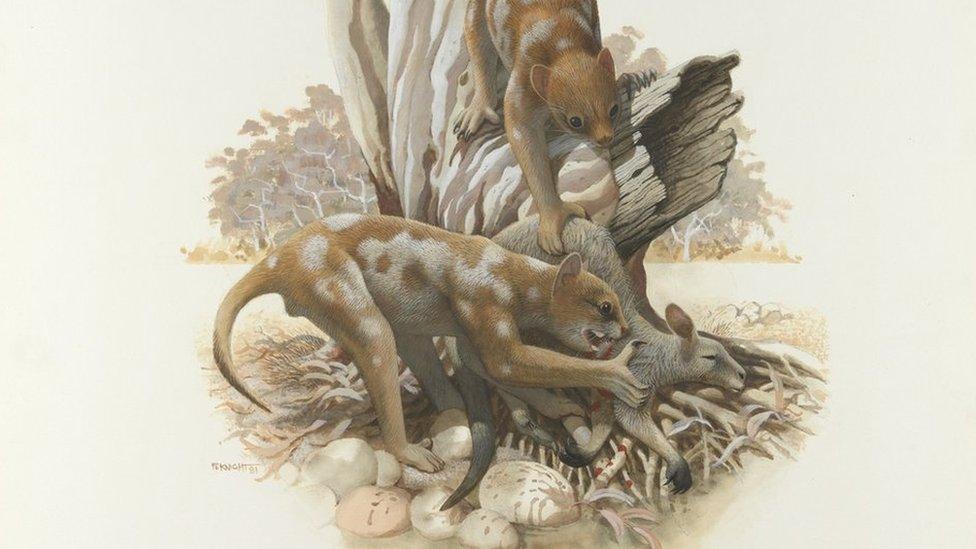
- Published27 July 2016
